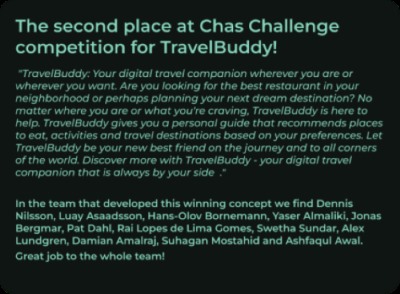
Travel Planning App: AI-Powered
My Role: UX/UI Designer
Project Duration: 5 Weeks
Tools Used: Figma, FigJam, Slack, Canvas
About The Project
Create an intuitive travel assistant app that provides personalized recommendations based on user preferences.
GET START
Project's Overview
TravelBuddy is a user-friendly, AI-powered travel assistant app designed to provide personalized travel recommendations. This project was my first experience working on a real UX/UI process, where I collaborated with designers and backend developers.
My contributions included refining typography, layout, spacing, UI components, and ensuring accessibility compliance.

My Role
As a UI/UX designer, I make sure that my designs are well received by users, and can be implemented by developers.
Ensured clean, readable text and clear hierarchy.
Made sure elements were well-spaced for a visually balanced design.
Helped define reusable UI components for consistency
Checked contrast ratios and color accessibility.
when the application is continued, it can be easily carried out.
This process is made so that the requirements and problems obtained meet the target market.
Problems VS Solutions
Problems
- 👉 Overwhelming Travel Options: With an abundance of choices for flights, accommodations, and activities, users experience decision fatigue, making it difficult to select the best options.
- 👉 Non-Personalized Recommendations: Existing travel apps fail to offer personalized suggestions based on individual user preferences, often providing irrelevant options that don't match the use needs.
- 👉 Disorganized Pre-Travel Planning: Travelers frequently need to use multiple apps to manage different aspects of their trip, booking flights, accommodations, and creating itineraries, leading to inefficiency and time wastage.
Solutions
- 👉 Personalized AI Travel Suggestions: Custom recommendations based on the user's travel preferences, interests, and past behavior.
- 👉 Non-Personalized Recommendations: Compare flights, accommodations, and activities all in one app, saving users the hassle of switching between different services.
- 👉 Geo-Based Recommendations: Real-time travel tips based on the user's location, including suggestions for nearby attractions, dining, and activities.
- 👉 Pre-Travel Checklist & Notifications: Keeps users organized with helpful reminders and tasks to complete before their trip, ensuring a smoother travel experience..
Persona
We conducted user interviews to gather insights into travel behaviors, challenges, and requirements. This allowed us to develop accurate personas and tailor the app to specific user needs, improving both usability and relevance.
Persona 1

Name: Eva - Adventurous Traveler
Eva enjoys outdoor activities like hiking, camping, and diving. She values freedom, adventure, and self-challenge.
Goals
Eva wants personalized adventure recommendations and real-time information about terrain and weather conditions at her travel destinations. She struggles with finding reliable, up-to-date travel information tailored to her specific interests.
Think & Feel
Eva seeks freedom and adventure but gets frustrated by lack of relevant information.
See
Eva is constantly looking for travel apps that provide detailed information and real-time updates.
Hear
She hears tips from other travelers and online reviews.
Say & Do
'I want recommendations for new adventures' — Eva plans and books activities based on her interests.
Persona 2

Name: David - Business Traveler
I travel frequently for work and need to book flights, hotels, and transportation at the last minute. I use apps and online booking services to make my reservations and keep track of my travel plans.
Goals
' For me, it would be very useful if the AI assistant could act as a personal travel assistant that could handle the entire booking process for me, including comparing prices, booking flights and hotels, and keeping track of my travel plans. I would also like the assistant to be able to give me real-time updates on flight status and traffic conditions to help me plan my business trips smoothly and efficiently. '
Think & Feel
Values efficiency and ease in booking travel. Frustrated by last-minute bookings and lack of real-time updates.
See
Sees airports, hotels, and booking platforms on his devices.
Hear
Hears tips from colleagues on efficient travel planning.
Say & Do
'I need an app to handle my bookings.' Does, books last-minute travel and manages itineraries using apps.
Competitive Analysis
TravelBuddy differentiates itself from competitors such as Google Travel, TripIt, and Kayak by focusing on:
AI-Powered Personalization
Unlike many apps, TravelBuddy's AI offers real-time personalized recommendations, adapting to the user's preferences.
Centralized Platform
TravelBuddy combines booking and itinerary management in one seamless platform, eliminating the need to juggle multiple apps.
Design & Key Features
Features I Helped Shape
Geo-Based Recommendations
Real-time tips about local attractions, events, and weather to help users make the most of their destination.
Search Filters
Users can filter by price, cuisine, or activity type, making the search process more efficient.
Craving Input
For food-related searches, users can input or select specific cravings, allowing for a more personalized dining experience.
Typography & Layout
The typography was chosen for readability, with clear hierarchy and legible fonts. Spacing and padding were adjusted to ensure visual balance across the app.
Personalized Recommendations
AI technology provides tailored travel suggestions based on the user's preferences, budget, and previous trips.
User Flow
We kept the user flow simple and intuitive.

Users are greeted and prompted to create an account or log in. They input basic preferences, allowing for personalized recommendations.

Users can search for nearby places to stay, dining options, and activities, with recommendations customized based on their profile.

Once users find their ideal options, they can easily book flights, accommodations, and activities—all in one app.

Users receive timely reminders and updates to ensure they are ready for their trip.
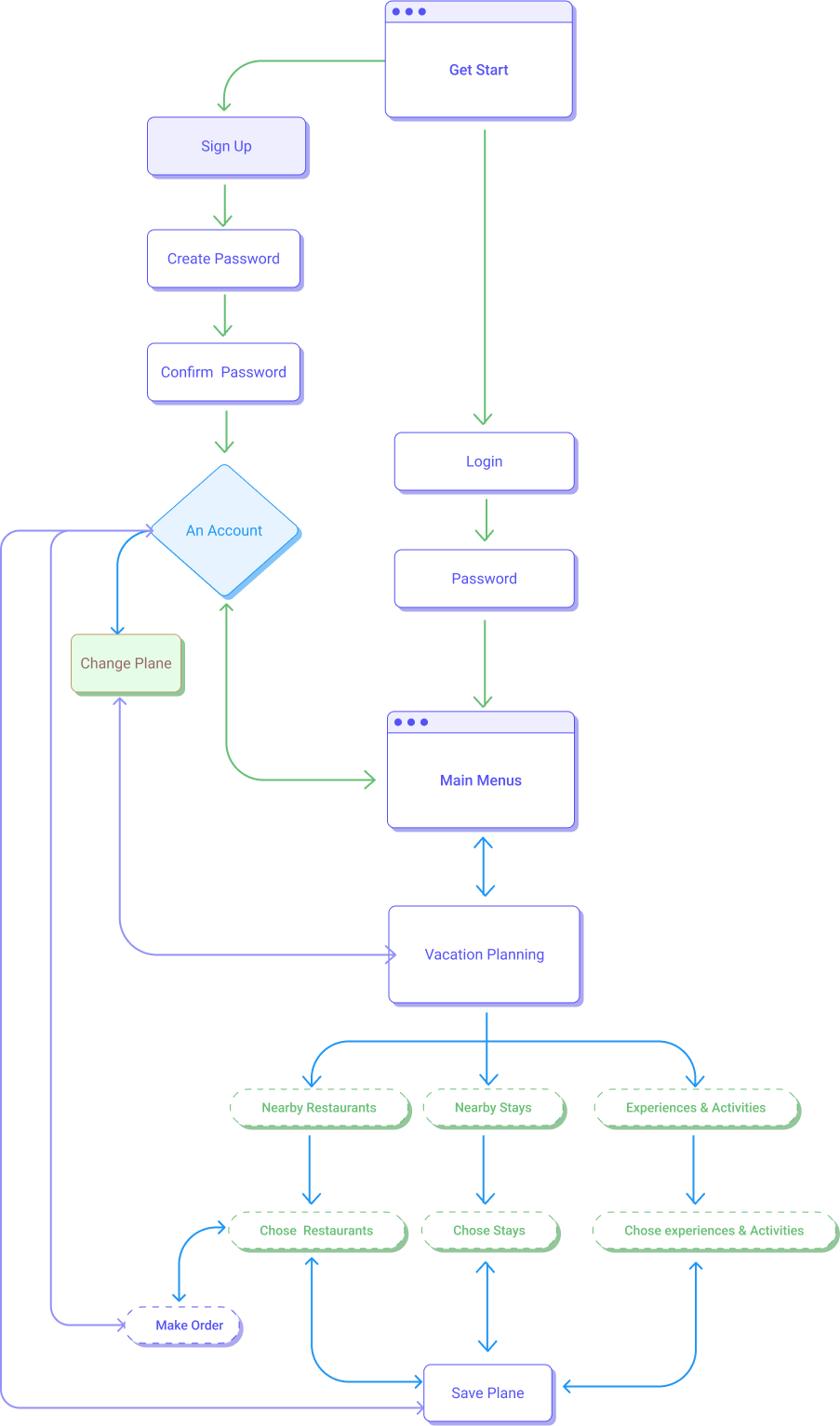
UI Design
Our system ensures a harmonious, accessible, and responsive design framework that is user-friendly and adaptable to varying contexts.
User-friendly, with simple button presses based on real user feedback for enhanced usability. Clear color contrasts, easy-to-read text, and a mobile-friendly interface with touch-friendly buttons and links. Customizable light and dark modes for a comfortable experience in any setting.
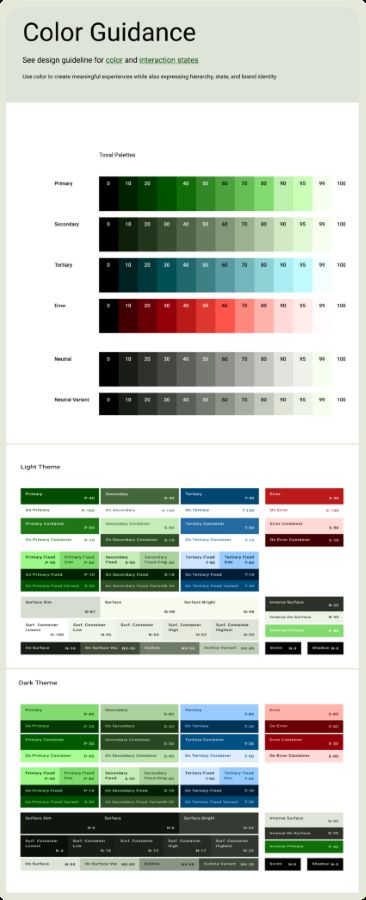
Key Features
Personalized Assistance
The app tailors the user's experience by addressing them by name and offering customized services (vacation planning, finding places to stay, eating out, and activities).
Custom Search Filters
Users can filter dining options by price range, type of cuisine, or specific cravings, enhancing the search experience.
Flexibility in Choices
Users can either select predefined options or input specific desires (e.g., specific food cravings or types of vacation).
Rating System
Users can rate the app on a scale of 1 to 5 stars and add a review title and detailed feedback to explain their rating. Users have the option to cancel the rating process or send their feedback, giving them control over the process.
User Profile
Profile creation allows the app to personalize recommendations based on preferences, improving the overall user experience.
Visual Design
The app's functionality focuses on user personalization, helping users find travel-related services (like accommodation, dining, and activities) based on their personal preferences and location. The search options are highly customizable, and the profile creation ensures the app can provide more relevant and tailored suggestions.

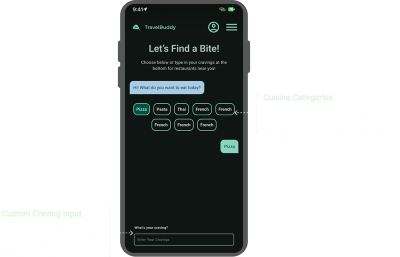
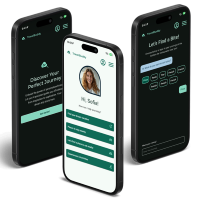

Testing & Results

Of users found the AI recommendations highly useful for trip planning, significantly reducing decision fatigue.

Of users reported that the app's layout was easy to navigate, thanks to clear typography and thoughtful spacing.

Reduction in decision-making time, with users feeling less stressed and more organized during the planning process
Future Improvements
Voice-Based Travel Assistance
Introducing voice commands to make the app even more user-friendly, especially for users on the go.
Social Media Integration
Enabling users to share their itineraries and experiences with friends or family.
Deeper AI Insights
Enhancing the AI to provide even more granular recommendations, such as suggesting specific outdoor activities or events based on weather forecasts.
Reflection & Challenges
✨ Managing Personalization Without Complexity
One of our biggest challenges was balancing a personalized experience with simplicity. While we wanted TravelBuddy to offer tailored recommendations, too many customization options initially confused users. To address this, we simplified the interface by introducing guided choices and offering default settings that users could refine over time as they interacted more with the app.
✨ Improving Geolocation Accuracy
Ensuring that location-based suggestions were accurate was critical for the app's success. Early in development, we noticed inconsistencies in geolocation data, particularly in remote areas. To overcome this, we improved our use of geolocation services by switching to more reliable APIs, while also integrating fallback options to ensure users still received relevant recommendations even when precise location data was unavailable.
✨ Optimizing the AI for Usability
The AI assistant was central to our design, but early testing revealed that it occasionally struggled to deliver contextually relevant suggestions. Users sometimes found it slow or requiring too many inputs. After evaluating the AI's natural language processing, we improved its ability to anticipate user needs, refining its decision-making process to deliver faster, more relevant suggestions with minimal effort from the user.
✨ Balancing Notifications and Real-Time Updates
We faced a challenge in keeping users informed without bombarding them with too many notifications. Initially, users felt overwhelmed by frequent updates, especially during their travels. To improve, we implemented a more intelligent notification system that prioritizes important updates while allowing users to customize how and when they receive alerts, ensuring a less intrusive experience.
Conclusions
Conclusion
By addressing user pain points such as decision fatigue, disorganized planning, and lack of personalization, TravelBuddy successfully simplifies the travel planning process, offering users a more seamless and enjoyable experience.
Conclusion
The app's features, such as AI-driven recommendations, geo-based tips, and centralized booking, make it a unique solution in the travel industry.
We took second place in the 'Chas's Challenge' at Chas academy!
